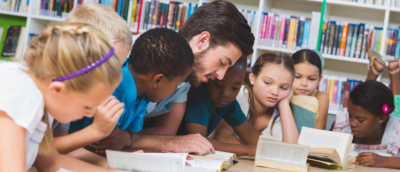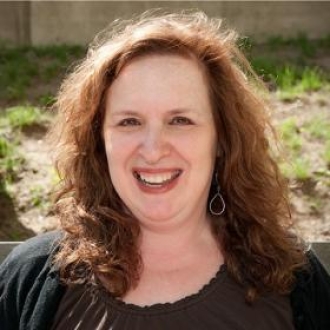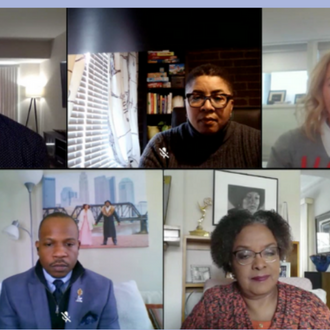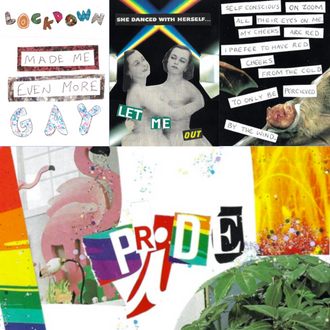The Freedom to Read is Worth Fighting For

Authored by Jinnie Spiegler, Director of Curriculum and Training, Anti-Defamation League
Telling children they can’t read a particular book has short and long-term consequences. When we say to a child that they can’t read a book they want to read, it is a rejection of something of importance to them. We’re telling them their interests and curiosities don’t matter or, worse, are bad.
When my daughter was in fourth grade, I faced a book banning controversy. Students at her school were allowed to choose their books during independent reading time, and she selected The Hunger Games — a dystopian futuristic trilogy. I was thrilled she wanted to read a book that raised important societal questions about sacrifice, censorship, oppression and equity and featured a strong female protagonist. Several other parents of children in the class were not so thrilled. They didn’t like the violence in the book and were concerned about “the games,” essentially a deathmatch among young people. These parents worried that their children would be tempted to choose a book they didn’t want them to read. They tried to have the book banned. After several tense meetings with the principal and my daughter’s teacher, the school decided to allow her and two other students to read the book.
This was my first foray into book banning, and it taught me three important lessons: (1) You can’t stop a child from reading a book; they will find a way even if that means lying to you and reading it secretly. (2) Children are drawn to books for different reasons and often those reasons resonate powerfully with some aspect of their identity or experience. We need to trust them and be there for them when they ask for help. (3) If young people start reading a book they don't understand or causes them discomfort or pain, they’ll put it down.
What are book bans?
Book challenges and bans happen when people and groups object to, challenge and attempt to ban books based on a book’s content, ideas, themes or characters. The objections come from different people: groups or organizations including parents, schools, school boards, patrons, political or religious groups, librarians, teachers, elected officials and even students. Sometimes the challenges stem from a genuine concern for a child’s wellbeing and emotional safety. More often, these book bans also have a political agenda and attempt to erase important current and historical aspects of our diverse society. One of the concerning effects of the Critical Race Theory laws sweeping the nation is that books are being cited as “CRT” and are being challenged and banned in classrooms and schools.
Book banning is nothing new. It is centuries old. The patterns and themes around what kind of books are banned often signal something that is happening in society. In a recent survey of educators about book bans. teachers shared the most common topics among reported challenges. Books with LGBTQ+ characters or topics topped the list. Other frequently challenged topics included “critical race theory,” ethnicity and race, racial inequities, sex and sexuality that is not abusive or violent, and “non-traditional” family structures. In 2020, among ALA’s top 10 most challenged book lists, six out of ten of those most challenged books are about race and racism and by authors of color, most of whom are Black.
Banning books conveys messages to children
Telling children they can’t read a particular book has short and long-term consequences. When we say to a child that they can’t read a book they want to read, it is a rejection of something of importance to them. We’re telling them their interests and curiosities don’t matter or, worse, are bad. We also convey that something they care about or want to learn about is off-limits, forbidden or wrong. The irony is that preventing a child from reading a book often pushes them to want to read it more. As a result, we may put them in the position of lying about what they are reading, and we’ve lost an important opportunity for dialogue about issues that matter to them. Communication is shut down, sometimes permanently.
In addition to these general messages, when books by and about people of color, LGBTQ+ people, other marginalized communities, or books about bias and injustice (such as a book about Ruby Bridges) are challenged and banned, it erases the people and stories of those communities from classrooms and libraries. Prominent children’s book authors have weighed in on this current wave of book banning.
Angie Thomas, a Black author of young adult books, including The Hate U Give, tweeted:
“It’s emotionally taxing to have my book banned. But not because they’re my books, but because all I can think about is the message it sends to the Black kids who see themselves in my books. They deserve to have their stories told whether it makes you comfortable or not.”
Kelly Yang, an Asian American children’s book author, in an interview with School Library Journal, echoes that sentiment:
“Growing up I didn’t have a book like that. I always thought it was shameful. I was determined to hide things. We know the importance of our books. It’s undeniable.”
Alex Gino, author of George (soon to be Melissa’s Story), about a transgender girl and one of the most banned books in recent years, writes:
“Kids lose out when books are challenged, especially transgender kids, deeply in need of seeing reflections of themselves. And while most direct challenges fail in that books aren’t taken off the shelves, they make it easier for soft censorship to creep in, like when books aren’t purchased for fear of possible controversy, are shelved in a restricted area, or are left out of relevant book talks to avoid potential pushback.”
Removing these books, in which young people see themselves, tells these young people that their stories, experiences and perspectives are not valid or valued. That they are not valid or valued. Those messages are harmful on a personal level and very damaging on a societal level. Seeing themselves reflected in books is critical for children of color and other marginalized young people. In fact, books are sometimes quite literally a lifeline. Banning these books also harms other children because these books may be an entry point or their only way into those narratives. This is critical for understanding differences in our multicultural and pluralist society and world.
What you can do about book bans
If you’re concerned about book banning, there are several actions that libraries and others can take:
- Make public statements that highlight the importance of the freedom to read, like the Kansas City Public Library and Austin Public Library did.
- Participate in Banned Books Week. which takes place every year in September. Banned Books Week is an opportunity to celebrate the freedom to read and can include author visits and readings from banned books.
- Report censorship attempts to ALA’s Office for Intellectual Freedom, which compiles challenged books and informs the public about censorship efforts.
- Embrace and prioritize books by and about people of color, other marginalized groups and books about social change and social justice. Find ways to amplify these books all year long.
The power of books to affirm, teach, empathize and act should compel all of us to fight to make sure that our schools, libraries and communities preserve the freedom to read.

Jinnie Spiegler
Director of Curriculum and Training, Anti-Defamation League
Jinnie Spiegler is the director of curriculum and training at ADL where she creates anti-bias and bullying prevention training and curricular resources. Her professional interests include project-based learning, current events and civics education, children’s literature and social justice education. Jinnie has worked for over 20 years in the field of K-12 education for both NYC-based and national educational organizations.
Related Articles

Speak Up/Speak Out: Conversations on Race in ColumbusSpeak Up/Speak Out: Conversations on Race in Columbus
Columbus Metropolitan Library
Discover how Columbus Metropolitan Library committed to a strong and sustained effort to combat racial inequity in their organization and community, focusing on the Black experience specifically and making race conversations a priority.
Learn More

Creating 2SLGBTQIA+ Library Spaces During a Pandemic
Kitchener Public Library
Discover how Kitchener Public Library developed an initiative that provides 2SLGBTQIA+ specific programming, collections and resources throughout the whole year.
